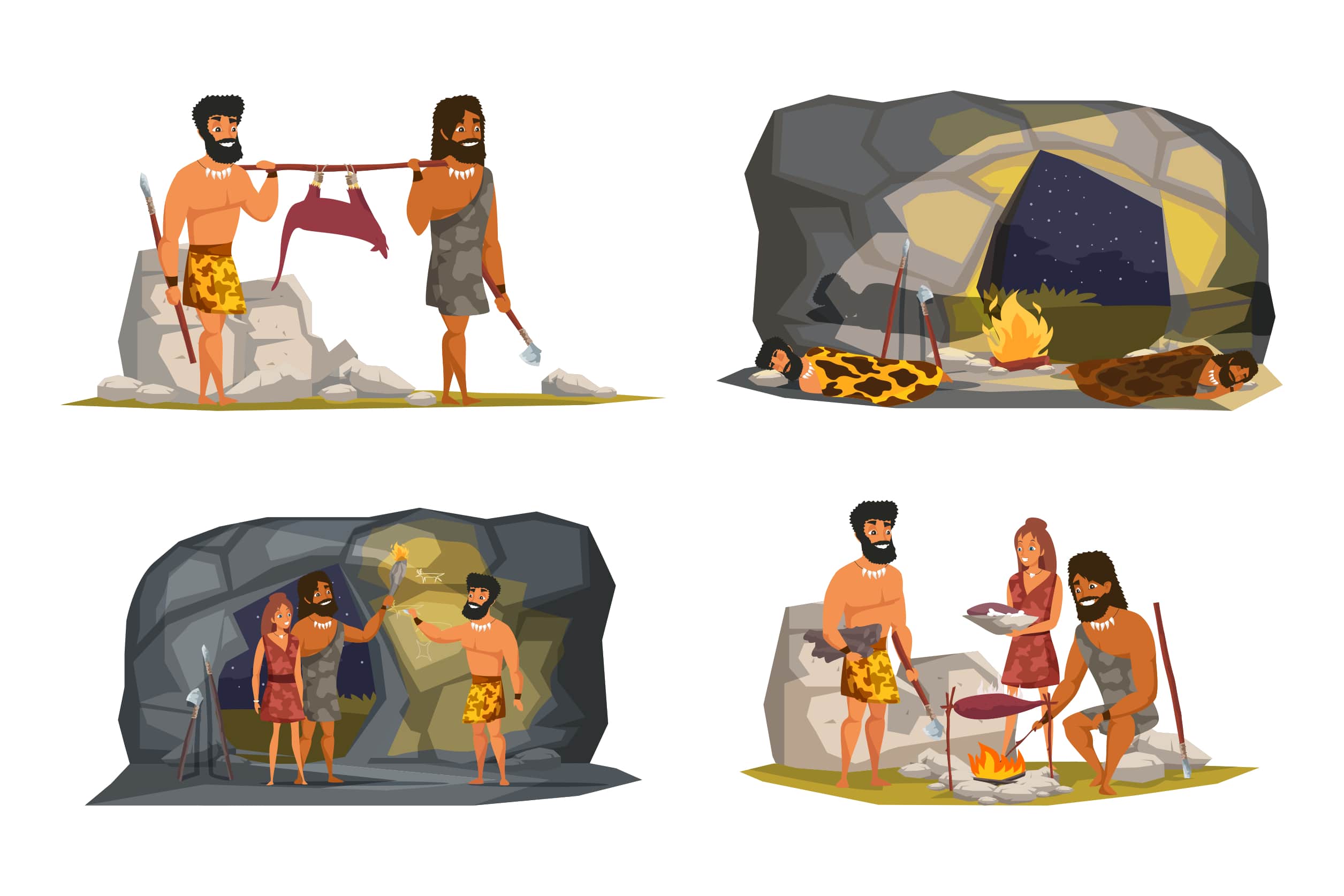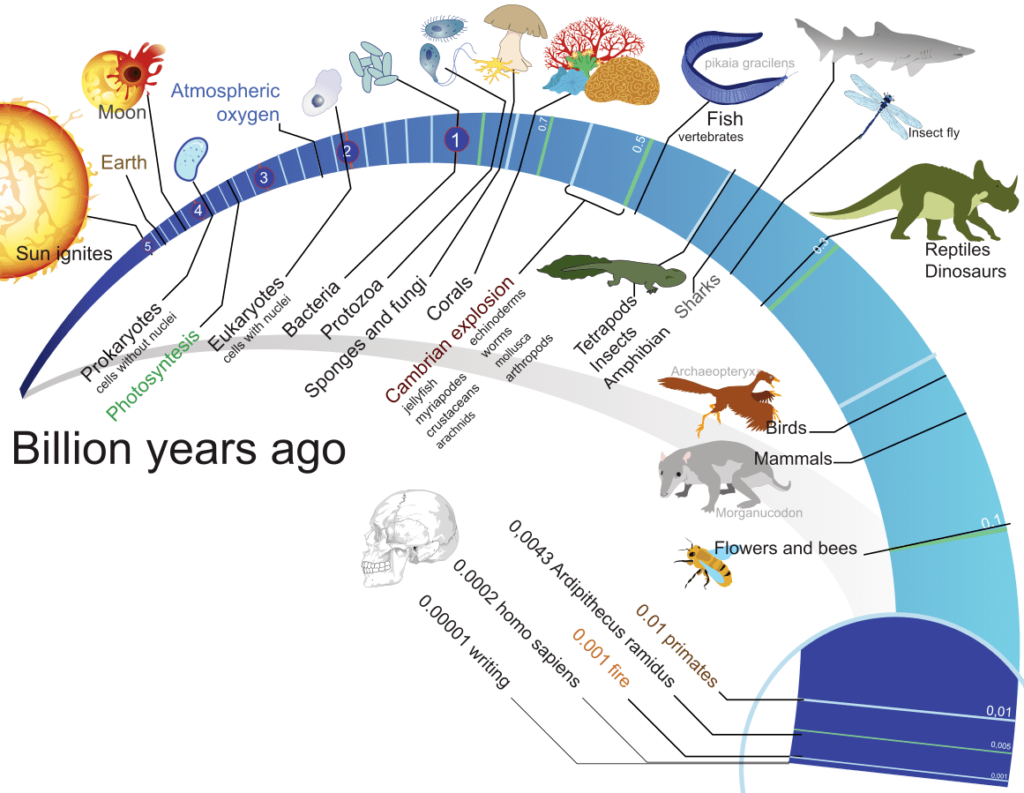Introduction
The transition from primitive humans to modern humans involved various modifications. Throughout this process, several human lifestyles were observed. They transitioned from being food gatherers to producers. They made numerous discoveries that are still in use in modified form. They then started to create shelters for a prolonged stay in a particular location as farming advanced. They are thought to have originated in Africa and then gradually spread to other regions of the world. These people initially lived in tiny groupings but over time shifted to bigger groups. With that, the concept of villages was developed and cultural adaption became simpler.
Lifestyle and Culture of early modern humans
- In the beginning, humans were hunter-gatherers. They moved around extensively and used stone weapons to hunt wild animals and obtain harvest from trees.
- To protect themselves from the harsh weather, they used to cover themselves in either animal skins or leaves or bark of trees.
- As they progressed, they discovered fire and learned to use it for many things.
- Early modern humans shifted toward farming as the climate on earth warmed up.
- Some of these humans were engaged in heavy hunting, while others were in the early stages of domestication.
- Early modern people raised crops like corn, wheat, and barley and became food producers.
- The notions of family and community also emerged when these humans began residing in small communities. In turn, villages were established for safety and cooperation of the people.

Population Trends Beginning About 100,000 Years Ago
- Researchers and historians have estimated that early modern humans, or Homo sapiens, originated in various parts of Africa between 200,000 and 100,000 years ago.
- For many years, these modern humans continued to produce crude, primitive stone tools, just like their ancestors.
- According to scientific studies, there was a gap period between, when people start to look modern and when they start behaving modern.
- Stephen Shennan, an archaeologist at London University, believes that cultural change is what allowed humans to socialize and begin residing in large groupings. This paved the road for their modernization.
- Population growth in Africa made it simpler for people to establish connections with nearby communities. Most likely, they switched partners for mating. This ultimately resulted in the exchange of ideas and genetic material which paved way for newer creations and inventions.
- Homo sapiens first migrated from Africa to Europe some 45,000 years ago.
- Neanderthals were already present in Europe when modern people first arrived. They outnumbered their rival Neanderthals and eliminated them from Europe.
- The population started to drop around 25,000 years ago, during the Ice Age, when the ice almost completely cover the northern Europe. However, when this era came to a conclusion, the population once more increased.
- With the introduction of farming and established life 11,000 years ago, female fertility also increased. As a result, the population reached up to 6 to 7 million on the beginning of the Neolithic period.
Early Modern Man Society
- Modern humans initially preferred to remain in small groups, but they gradually began to form big groups as a result of mutual ties.
- In these groups, everyone had access to resources like food and tools.
- During that time, there was still no sense of personal or individual control and hence they used to be a danger to other groups.
- When the large groups of humans divided themselves into villages, all of these things started to change. They became more sophisticated, and gradually the idea of the family also emerged.
Summary
Numerous studies have been conducted to examine- the way of life, culture, and population growth of early modern humans. Early modern people began to adapt to various habitats and surroundings as they began to spread across the globe. A variety of lifestyles could be observed as a result of the shifting climate and farming activities.
They developed farming habits and cultivated various crops for food and nutrition. People stayed in the area longer as a result of these farming activites. This caused a transition from a nomadic to a settled lifestyle. Also the concept of family and community developed during this era.
Frequently Asked Questions
Which is the World’s Oldest “Village”?
Ans: The Mladec caverns are located in the Prague region of the Czech Republic is regarded as the world’s oldest “village” . Many early modern human skeletons or remains can be found in these caves. The bones discovered here were 31,000 years old.
Researchers attempted to study the DNA of these fossils but were unable in doing so. They did, however, manage to analyse the DNA of two specimens and discovered that those did not belong to the “homo” series.
2. When and what is the reason of human population explosion which occured 60,000-80,000 years ago?
Ans: According to several archaeological studies, the Neolithic era is responsible for the expansion of the human population. In this period the change to domestication led to the development of more sophisticated procedures of agriculture and settlements, opening the path for population rise from 4-5 million to 60-70 million. But. according to a study from the University of Paris, population growth occurred considerably earlier than the farming or Neolithic periods, more likely population expansion occurred in the Paleolithic hunter-gatherer period.
3. What did the early ancestors eat?
Ans: The earliest hominins likely had an omnivorous diet similar to that of modern chimpanzees, which includes substantial amounts of fruit, leaves, flowers, bark, insects, and meat.
